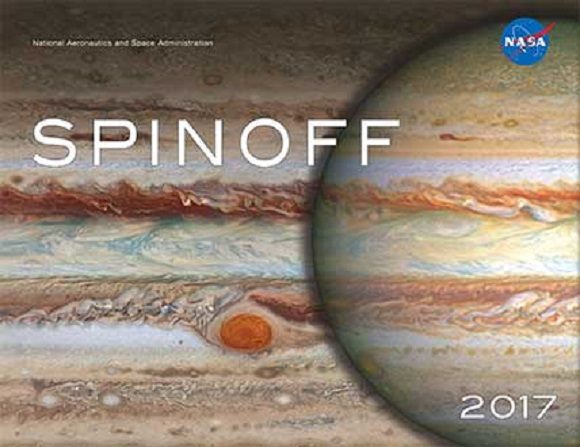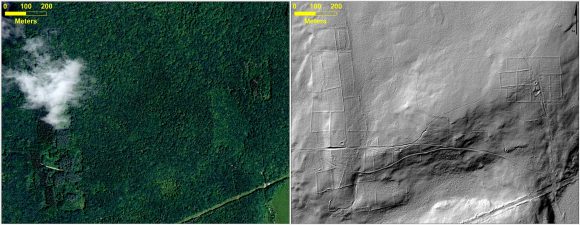Every year, NASA showcases how the technology it develops for exploring space and studying other worlds has applications here on planet Earth. It's what known as Spinoff, an annual publication that NASA's Technology Transfer Program has been putting out since 1976. Since that time, they have showcased over 2000 examples where NASA technology was used for the sake of creating products that had wide-ranging benefits.
For Spinoff 2017, NASA selected 50 different companies that are using NASA technology - which included innovations developed by NASA, those made with the help of NASA funding, or those produced under contract with the agency. With examples ranging from GPS and satellite imaging, to light detection and ranging (Lidar) and biomedical devices, the list of commercial applications for this year is quite impressive!
For over 50 years, the NASA Technology Transfer Program has share NASA resources with private industries, a process which is colloquially referred to as "spin-offs". In finding the widest possible applications for NASA technology and leveraging partnerships and licensing agreements with industry, they ensure that the large investments made in space exploration find additional uses that benefit humanity here on Earth.

Spinoff is an annual publication exploring the many applications NASA technology has. Credit: NASA
In the past, spin-offs have included memory foam, freeze-dried food, emergency thermal blankets, Dustbusters, cochlear implants, and numerous other application that have benefited the computer, medical, transportation, manufacturing and safety industries - thought not Velcro or Tang (contrary to popular conception). As they describe their mission in this year's "Executive Summary":
"Each year, Spinoff features dozens of commercial products derived from NASA technology that benefit everything from medical care and software to agricultural production and vehicle efficiency. The companies featured in this year's publication span a broad range of industries and geographic locations, showing the diverse benefits our Nation enjoys from its investment in aeronautics and space missions."
This year's spinoffs were certainly numerous, but some are particularly worthy of mention. For instance, there is the metal oxide semiconductor (CMOS) image sensor that was developed by NASA's Jet Propulsion Laboratory. Since its creation, it has become one of NASA's most ubiquitous technologies, leading to the development of DSLR cameras, camera phones, and digital cameras that are available on every handheld device on the market.
And then there's the GPS technology NASA began developing back in the 1990s, which included software capable of correcting for GPS signal errors and enabling incredible accuracy. John Deere recently acquired this technology and used it to develop a popular class of self-driving farm tractors. Today, as much as 70% of North American farmland is cultivated by self-driving tractors that rely on this technology.

Aerial photograph of a forest in Connecticut (left), and bare-earth lidar image beneath the overgrown vegetation (right) showing the remnants of stone walls, building foundations, abandoned roads and what was once cleared farm land. Credits: NASA/Katharine Johnson
And then there is the spinoff involving NASA-developed laser imaging and ranging technology (Lidar). This technology allowed the Pheonix Lander to detect snow falling from the skies of Mars, and will be used to OSIRIS-REx mission to land on an asteroid in the coming decade. And recently, this same technology was used by a team of archaeologists to map prehistoric sites in North America where hunter-gatherers hunted bison en masse.
In addition, "Robotics Spinoffs" get a special mention in this year's report, with homage being paid to missions like Curiosity and Juno (which have explored the surfaces and atmospheres of other planets) and space-based observatories like Spitzer, Chandra and Hubble - which have looked deep into the cosmic field. The technologies used by these missions has also had an impact in virtually every sector of the world's economy.
The publication also includes a section called "Spinoffs of Tomorrow", which highlights 20 technologies that are especially well-suited for commercial adaptation. These include thin-film piezoelectric and composite materials that could be used in wind turbines to generate more electricity and improve electrode durability, as well as in personal devices to generate power from mere movement.
There's also the new Armstrong wing design that lower drags, which could make airplanes and wind turbines more efficient. The Glenn Research Center is also cited for their development of a suite of materials and methods that optimize the performance of nanomaterials by making them tougher, more resistant, and easier to process. This could be used to build super-resilient fabrics and consumer products.

NASA's Juno spacecraft launched on August 6, 2011 and should arrive at Jupiter on July 4, 2016. Credit: NASA / JPL
Then there's an underwater vehicle developed by JPL that uses thermally-generated changes in buoyancy to generate electricity and recharge its batteries. This technology, which enables submarines to remain underwater for years at a time, could lead to the creation of nearly self-sufficient undersea drones - something that has applications in everything from sea exploration to pipeline monitoring.
The section also makes mention of an easy-to-use device that separates DNA, RNA, and proteins outside a traditional lab environment. Originally intended for use aboard the ISS, this device could be a boon for developing nations where medical infrastructure may be limited. And there's also a system that autonomously detects faulty wiring and reroutes around it.
As always, the development of cutting-edge technologies can have applications that go far beyond the purpose for which they were originally intended. Whether it is robotic landers or probes, miniaturized cameras, improved electronics, or advanced materials, commercial industries here on Earth have always benefited from the research, development and exploration efforts of the space industry.
And as our efforts to send astronauts to Mars, return to the Moon, and explore the outer Solar System andbeyond continue, who knows what commercial applications will emerge as a result? And in the meantime, be sure to enjoy this video which explains how NASA technology is licensed through the TTP:
Further Reading: NASA







No comments:
Post a Comment